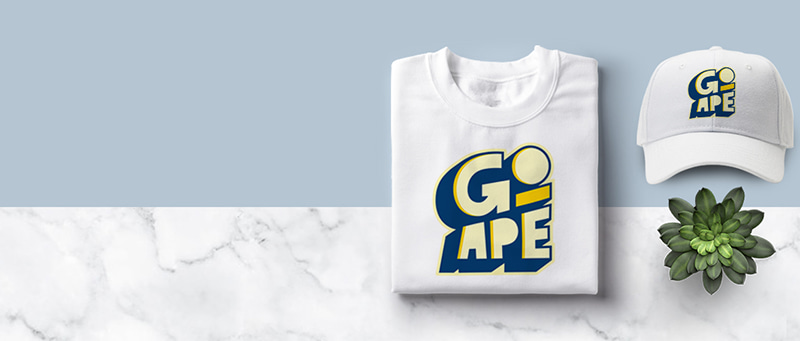Understanding Apparel: The Importance of Material Choices in Your Closet
The option of textile in clothes plays a critical function in both aesthetics and functionality. Various materials offer varying degrees of convenience, longevity, and breathability, straight influencing the user's experience. Comprehending these subtleties can enhance one's closet considerably. Yet, numerous ignore just how these choices can impact not simply individual style, but also sustainability. What textile choices could redefine your wardrobe and straighten it with both style and duty?
The Function of Textile in vogue and Capability

Common Material Types and Their Attributes
When picking clothing, understanding the features of typical fabric kinds is important for making informed selections. Cotton, a widely-used all-natural fiber, is recognized for its softness, convenience, and breathability, making it suitable for sportswear and daily garments. Bed linen, an additional natural option, flaunts excellent moisture-wicking properties and an unique structure, ideal for cozy climates.Wool, commonly preferred for its heat and longevity, differs in fineness; merino wool is soft against the skin, while coarser types are used for outerwear. Synthetic textiles like polyester and nylon use longevity and resistance to creases, making them preferred for activewear and travel garments. Blends, which integrate artificial and all-natural fibers, can boost functionality while maintaining comfort. By acknowledging these material characteristics, individuals can pick apparel that lines up with their lifestyle and visual preferences.
Breathability and Comfort: Picking the Right Fabrics for Various Environments
Choosing the ideal fabrics for numerous climates can substantially boost convenience and total wearability. Breathable materials are crucial in hot environments, as they enable air circulation and moisture dissipation. Fabrics such as cotton, linen, and moisture-wicking synthetics properly draw sweat far from the body, keeping the user cool and completely dry. On the other hand, in colder environments, thicker materials like woollen or fleece provide insulation while retaining breathability, making certain warmth without overheating.Additionally, the selection of textile weight plays a crucial duty; lightweight textiles are more suitable for summer, whereas much heavier options are fit for wintertime wear. Understanding the special homes of each material allows people to dress suitably for differing weather. Ultimately, choosing breathable and comfortable fabrics customized to particular climates can substantially boost daily comfort and boost the total experience of using apparel.
Durability and Treatment: Just How Textile Affects Longevity of Your Wardrobe
Selecting the appropriate products can significantly impact the durability and care requirements of a wardrobe. Fabrics such as cotton and polyester are known for their resilience and ease of maintenance, making them excellent for day-to-day wear. In comparison, fragile products like silk and shoelace need more cautious handling and specialized cleansing techniques, which can boost the moment and initiative required for care. Branded Clothing.Durability is likewise affected by the fabric's weave and coating; firmly woven fabrics tend to stand up to wear and tear better than loosely woven options. In addition, artificial blends typically give boosted sturdiness, combining the very best qualities of multiple fibers.Understanding the treatment directions for each and every fabric is necessary, as inappropriate washing or drying out can bring about premature wear. Ultimately, picking long lasting materials can lead to a longer-lasting wardrobe, reducing the regularity of substitutes and adding to an extra lasting fashion option
The Impact of Textile on Fit and Shape

Lasting Fabric Choices: Making Eco-Friendly Decisions
The impact of material expands past fit and silhouette to incorporate ecological factors, motivating an expanding interest in sustainable fabric choices. Environmentally friendly fabrics, such as organic cotton, hemp, and Tencel, are getting traction amongst customers that prioritize sustainability in their wardrobes. These materials are typically created with less chemicals and water, decreasing their ecological footprint.Additionally, recycled fabrics, made from post-consumer waste, offer a cutting-edge remedy to the textile industry's contamination problem. Brands significantly accept transparency in their sourcing approaches, enabling consumers to make enlightened decisions about their purchases.Choosing lasting fabrics not just supports honest practices however additionally encourages the apparel industry to take on more liable production techniques. As understanding of ecological problems rises, people are prompted to assess the lasting impact of their material choices, cultivating an activity towards a much more sustainable and environmentally mindful method to style.
Elevating Design: How Material Can Change an Outfit
While lots of may concentrate on shade and cut when selecting an attire, the option of fabric plays a crucial function in raising style and boosting total look. Various products convey unique state of minds and messages; as an example, silk shows luxury and elegance, while denim supplies a laid-back, kicked back vibe. The structure and drape of a textile can dramatically alter the shape, with structured textiles offering a refined appearance and softer ones producing a more fluid, kicked back aesthetic.Moreover, the weight of the textile influences wearability throughout seasons. Light-weight fabrics like linen and cotton are optimal for summertime, while larger products such as wool and velvet provide heat and style in chillier months. Recognizing fabric properties, such as breathability and stretch, likewise encourages people to make educated options that improve comfort without compromising design. Inevitably, the ideal textile can transform a clothing from ordinary to phenomenal, making it a crucial consideration in any type of wardrobe.
Regularly Asked Inquiries
Just how Do I Recognize the Textile Content of My Clothes?
To recognize fabric material, one can check out treatment tags, conduct shed tests for fiber recognition, or consult fabric examples. These approaches aid distinguish materials, making certain notified selections for clothes care and maintenance in daily wear.
Can Textile Selection Affect My State Of Mind or Confidence?
Material selection can significantly influence an individual's mood and confidence. Branded Clothing. Certain materials might evoke sensations of comfort or elegance, while others can really feel restrictive or unflattering, inevitably affecting self-perception and emotional wellness throughout the day
What Fabrics Are Ideal for Sensitive Skin?
For people with delicate skin, all-natural textiles like bamboo, bed linen, and cotton are usually recommended. These products article are breathable, hypoallergenic, and much less most likely to trigger irritation, making them appropriate options for convenience and skin wellness.
Exactly how Do I Correctly Laundry and Look After Various Fabrics?
To properly wash and care for different materials, one need to consider each material's specific needs, including temperature setups, cleaning agents, and drying out approaches, making sure longevity and keeping the fabric's initial top qualities for optimal usage.
Exist Specific Fabrics for Athletic or Efficiency Wear?
Sports or performance wear usually makes use of textiles such as nylon, spandex, and polyester. These materials are developed for moisture-wicking, breathability, and versatility, enhancing motion and comfort during physical tasks while supplying longevity and assistance. Conversely, in colder climates, thicker materials like wool or fleece provide insulation while retaining breathability, making sure warmth without overheating.Additionally, the choice of material weight plays a crucial role; lightweight materials are better for summer, whereas larger alternatives visite site are fit for winter season wear. In comparison, fragile materials like silk and lace call for more careful handling and specialized cleaning approaches, which can raise the time and initiative needed for care.Durability is also affected by the material's weave and finish; tightly woven materials have a tendency to stand up to wear and tear much better than freely woven choices. In comparison, inflexible fabrics can limit activity however give a classic, polished look.Moreover, the density and appearance of the material can affect the visual assumption of body form. The effect of material prolongs past fit and silhouette to incorporate ecological elements, prompting an expanding passion in sustainable textile choices. The appearance and drape of a fabric can considerably modify the shape, with structured textiles providing a refined appearance and softer ones creating an extra fluid, unwinded aesthetic.Moreover, the weight of the fabric affects wearability across periods.